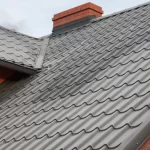
It’s important to measure properly when installing shingles on your home. You can use a chalk line to make sure the shingles are square to your roof. Once you’ve measured, you can begin to lay your shingles. To start, cut off three tabs from the bottom of the shingle, as well as the top tar. You’ll have to measure again along the eaves, if necessary.
If your roof has valleys or vents, you’ll need to install flashing around these areas. The first course of shingles should cover the top and middle flashing. Next, install a shingle over the bottom flashing. If there’s a chimney, add a shingle around it. You can also line the valleys with metal flashing. You’ll also need to install a metal flashing at junctions where shingles meet walls. A water and ice protector membrane can also be installed around these tricky areas. Always remember to use flashing materials that are compatible with your shingle installation process.
Besides nailing materials to your roof, you’ll need a shingle saw. This tool can be either hand-held or mechanical. The type of saw you use will depend on the type of shingles you’re installing. It’s also important to use an extension ladder so that you can work at an angle and reach the top of your roof. Make sure your ladder is at least three feet off the ground, so that you can remain stable while working on your roof. A chalk line can also help you line up your shingles with ease.
When installing shingles, you should also install an underlayment. Underlayment is an important part of shingling a roof because it serves as a second layer of protection between the shingles and the roof deck. This material is typically purchased in rolls and should be installed overlapping toward the top of the roof.
The shingle roof is one of the most popular types of roofing in the United States. It is composed of flat, rectangular pieces that are dark gray. It is also easier to install than other types of roofing. Furthermore, shingles have a long lifespan, lasting between ten and thirty years. Consequently, homeowners who are considering a new roof installation can choose from many different styles.
Besides shingling, the roof also has several other important parts. These include the fascia, gable, soffit, and gutter. In addition, the roof vent is an outlet for air, which can be a pipe or a stack. This is often placed on the slope of the roof or on the gable.
A good safety precaution is to make sure that you wear proper safety gear when working on your roof. Safety gear includes a hard hat, work gloves, safety glasses, and long pants. It’s also important to follow manufacturer instructions while on the roof.










